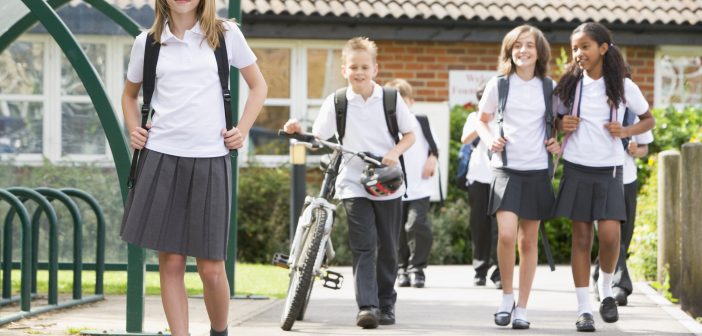Gryffindor, Ravenclaw, Hufflepuff and Slytherin.
You don’t have to be a Harry Potter fan to recognise what these names stand for.
They are, of course, the houses at the magical school of Hogwarts.
It’s not surprising that Hogwarts used a house system. After all, it is a system of organising students that originated in English boarding schools.
Traditionally, the “house” was the boarding house the student was a member of. They are represented by a symbol or colours and are typically named after something significant to the school or surrounds. A key element of the house system was to provide emotional support and a sense of community to students living away from home.
In many contemporary schools the house system is still used. But does it have the same purpose?
In the Australian public school system, the house system is used primarily for sporting events to build a sense of camaraderie and healthy competition. House points may also be accrued for attendance at community events or behaviour.
However, there is evidence that when properly implemented the house system in the modern school setting can have a range of benefits for students and the school community, beyond a competitive framework.
When a house system is used effectively to form communities within the wider school community, students get to know teachers and fellow students they otherwise wouldn’t have associated with. This may be through activities such as study sessions, house meetings or having recess within their house groups, as well as having set house activities where students of all ages participate.

This approach can break down barriers and result in friendships that transcend peer groups, grade levels, ethic groups and social class. Having these connections helps students have a sense of belonging and increase their self-esteem. It also has a positive impact on academic performance and attendance rates, as children feel more confident and positive about their learning environment.
At Lake Canyon Elementary in school in the US, older students are given mentoring roles with younger grades. This not only helps the younger ones transition into school but also helps build leadership skills in the older students. The Principal believes inter-house activities such as these have helped reduce bullying and other behavioural problems.
A study done at a Catholic school in Minnesota showed that students had a much stronger sense of community beyond their class group after the implementation of a house system. Teachers at this school also reported strengthened professional relationships and increased satisfaction linked to positive student outcomes.
These success stories show that when implemented effectively, a house system in schools can reduce student isolation, positively impact behavioural and academic outcomes and also increase teacher satisfaction.
It would be great to see the house system developed in Australian public schools beyond sports carnivals and house captains.
Maybe we need to start lobbying the Education Minister for a budget for magical sorting hats?

